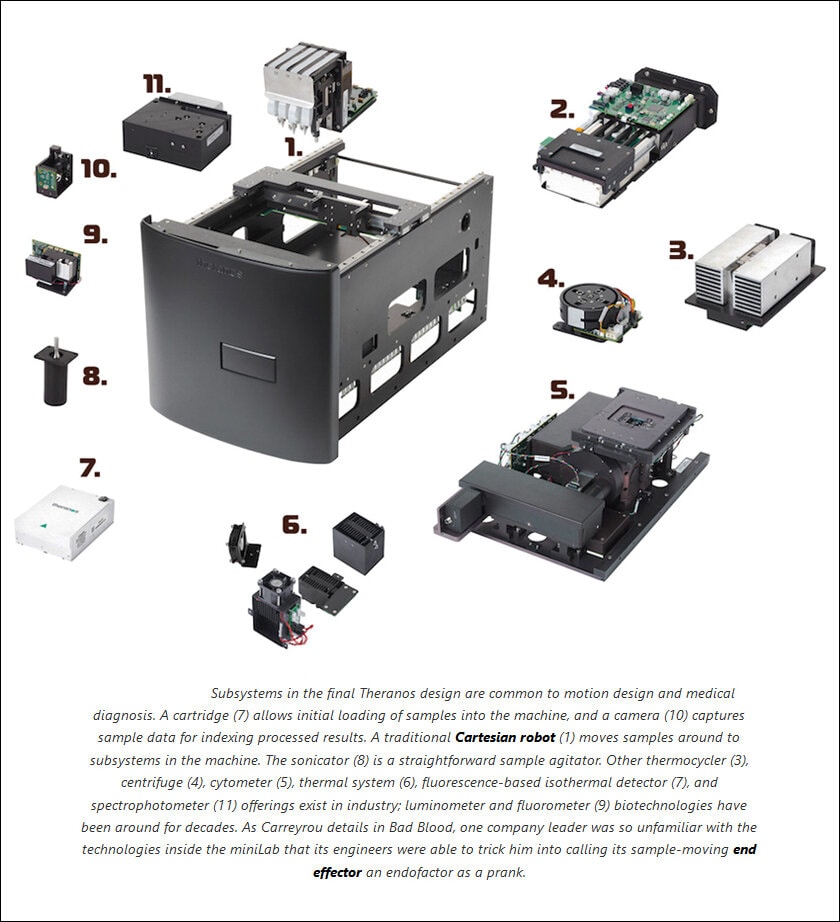Sometimes, the wizard behind the cool AI trick isn’t a silicon-drenched algorithm, but flesh and goo humans. Satyen K. Bordoloi goes behind the scenes of this hilarious, and all too human phenomena.
Elizabeth Holmes, wearing Steve Jobs-style jeans and turtlenecks, promises to revolutionize medicine. Her ‘revolutionary’ finger prick device, Edison, runs a battery of tests quickly and with just a few drops. People are wowed until they discover that Holmes is running the tests on her competitors’ old-fashioned machines behind the scenes. Edison turns out to be all smoke and mirrors, a pseudo-tech rather than a revolutionary one. Holmes is now in prison for it.

Elon Musk, not for the first time, recently pulled an Elizabeth Holmes. He tweeted a video of Tesla robot Optimus folding a t-shirt with expert precision. The video amazed people as it signifies the robot’s autonomous capabilities. However, the truth, as with many of Mr. Musk’s claims – like the Full Self Driving (FSD) capabilities of Tesla cars – is that an out-of-frame human controller is performing the motions.
Optimus folds a shirt pic.twitter.com/3F5o3jVLq1
— Elon Musk (@elonmusk) January 15, 2024
23 minutes after he posted this video of Tesla’s Optimus robot folding a T-shirt, he shared another tweet to clarify that ‘Optimus cannot yet do this autonomously’ after people started pointing out discrepancies. Ironically, Optimus or any other robot being able to do anything at all is actually a big deal.
This exaggeration of AI isn’t new for Silicon Valley. It’s such an ancient strategy by many companies that there’s a term for it: Pseudo AI. It’s not unlikely that Elizabeth Holmes was inspired by Pseudo AI when she built her empire atop a mountain of lies.
WHAT IS PSEUDO AI:
Pseudo AI, also known as AI washing, is the art of dressing up humans as AI. It’s when a startup realizes that building a functioning AI is tougher than erecting the Hurdal using IKEA’s instructions. So, they hire humans to pretend to be AI. Like Elizabeth Holmes used other machines while she pretended to use her Edison, Pseudo AI is when AI companies hire humans to pretend to be AI that’s pretending to be as good as humans. It’s essentially AI cosplay, if you will.
AI washing is mostly alarming, funny, and concerning. But at times, like in the case of Elon Musk, it can be outright dangerous. Whichever way you look at it, it exposes the dark underbelly of the AI industry.

PSEUDO ALL THE WAY:
The mantra of Silicon Valley has always been: fake it till you make it. Holmes shouldn’t have done it because her ‘invention’ involved life and death. Other tech companies, even AI ones, have followed this business strategy: they’ve pretended to have an AI capability without having it, then proceeded to ‘science the shit out’ to make what they claimed to have already made.
Before the current, second awakening of AI, a company called Spinvox, in 2008, promised to convert voicemails into text using AI, but used humans in overseas call centres to do the work. Call it the obvious case of third-world, minimum-wage humans to the rescue of first-world Silicon Valley. X.ai (before Elon Musk) has Amy, the AI scheduling assistant, who also used humans behind the curtains to do the work AI is supposed to do. The same happened with Expensify which claimed that they have ‘smartscan technology’ to process and convert receipts but have humans doing it.

These are innocent examples. Funny even. But sometimes these types of lies about AI can cross the line and cost lives.
Though this isn’t entirely the case of Pseudo AI, but outright lying, Tesla’s FSD has killed many in the US because despite Elon Musk’s claims, it is glitchy and not yet ready for the real world.
WHEN PSEUDO AI FOOLS HUMANS:
Among the many examples, what is heartbreaking is that the company which created and continues to lead the AI revolution, Google – is one of the prime offenders of AI washing.
In 2018, Google CEO Sundar Pichai unveiled Duplex at their annual conference. The demo video blew everyone’s mind because it showed the AI voice assistant Duplex making an appointment at a real salon while mimicking humans with remarkable accuracy, including using familiar human verbal tics and filter words like ‘uhm’, ‘mmhmm’ and ‘Gotcha’. The only problem is that as many pointed out, this video was probably faked and is a prime contender for the Pseudo AI award of the decade. The proverbial proof of the pudding was when Google shut down Duplex 4 years later. If Duplex was good enough to ‘uhm’ and ‘mmhmm’ its way into a conversation, it is impossible that Google would have shut the program.
Even during the launch of Gemini last year, the video clip it showed was edited to such an extent that it again raised an outcry from people about Google’s intention.
What is ironic, and funny with Google is that, eventually, what fooled one of its employees – Blake Lemoine, enough to panic and scream ‘AI is alive’, was not pseudo-AI but actual AI. Lemoine was chatting with Google’s early Large Language Model LaMDA, in June 2022 when he was spooked by the answers it gave, compelling him to do what he did, and promptly got fired. Of course, this was before any LLMs were released to the public as Dall-E would be launched a month later, and five months after that, ChatGPT. Post ChatGPT, everyone experienced what Lemoine did and it wasn’t alarming to anyone anymore.

CONCERNS WITH AI WASHING:
In most cases, AI washing, when it gets caught, is just funny or when a company like Google does it, sad. Yet, beyond its harmless undertones, it can be both bad and dangerous for people. It might be beneficial for people to just sprinkle AI dust over their project and wow people with technical prowess they do not have, but it can deceive people to the extent that it becomes difficult for them to distinguish genuine AI from all the marketing fluff out there. The unrealistic expectations it leads to can not only waste resources but cause a loss of trust in AI as a whole. In a world that’s already being divided on haters and lovers of AI, this is unnecessary.
Pseudo AI can also exploit ethical concerns regarding AI as by wrongly claiming AI capabilities, companies could justify discriminatory practices and downplay harms of AI like job losses, further fuelling anxieties about AI among people. Claiming false progress can also undermine the efforts of those who are genuinely working on the technology, harming progress in the field.
The fact that there aren’t clear regulations around AI means many companies get away with AI washing. This creates unfair competition and hinders the development of responsible AI practices. Consumers can also become wary of AI in general, with more pseudo-AI practices hitting the market, harming the adoption of truly good and beneficial AI technologies.

WHY DO COMPANIES DO IT:
The answer to this question is the answer to many a ‘whys’ under capitalism: profit. Sprinkling a bit of AI dust on their product, while using third-world sweatshop labour, is profitable because the AI dust gives a veneer of glamour that helps get more business. Even for rich people and companies like Elon Musk and Google, the lure of stock market prices shooting up immediately after AI washing is too much to resist. Every time Musk has lied about Tesla’s self-driving capabilities or shared a video of Optimus doing things, not only has his mythical lore as the genius-crusader of the tech world gone up, but the stock prices of his companies have as well. The same has been the case with Google every time it has indulged in these practices.
Investors love the illusion of AI. The problem is when the illusion proves to be a rabbit hole of deceit that can send the markets crashing down as quickly as it rose.
Not all is good with Alice in AI Wonderland if it is filled with pseudo-AI. Funny as it may inadvertently be sometimes, tackling this problem requires a multipronged approach aided by stricter regulations, consumer education and clear ethical guidelines for businesses. Without it, it isn’t long before the AI world also has its Elizabeth Holmes moment: an AI guru landing in prison.
In case you missed:
- AI Washing: Because Even Your Toothbrush Needs to Be “Smart” Now
- A Teen Suicide Spotlights Dangers of Unregulated AI Companions
- Susan Wojcicki: The Screaming Legacy of The Quiet Architect of the Digital Age
- Is Cloud Computing Headed for Rough Weather
- Generative AI With Memory: Boosting Personal Assistants & Advertising
- What are Text-to-Video Models in AI and How They are Changing the World
- OpenAI’s Secret Project Strawberry Points to Last AI Hurdle: Reasoning
- Project Stargate: Dubious Origins in the 1970s to AI Goldrush in 2025
- Why is OpenAI Getting into Chip Production? The Inside Scoop
- DeepSeek not the only Chinese model to upset AI-pple cart; here’s dozen more










